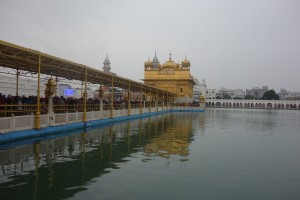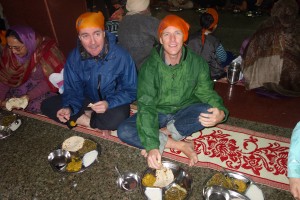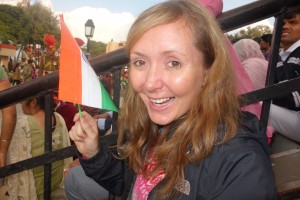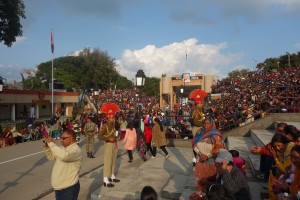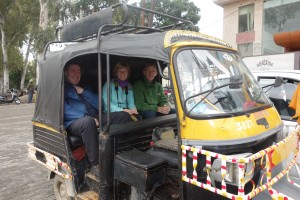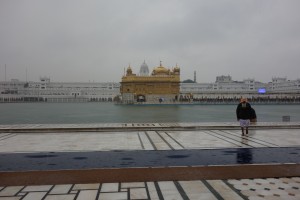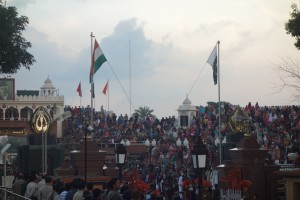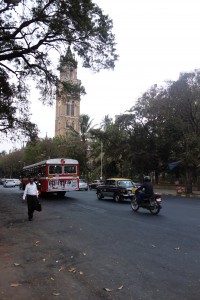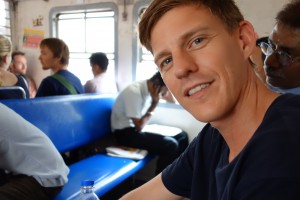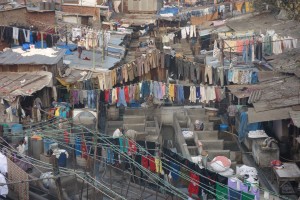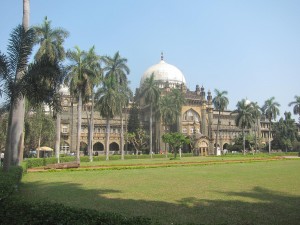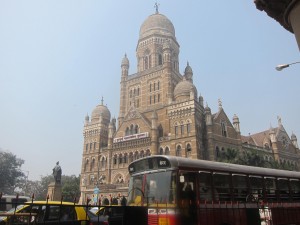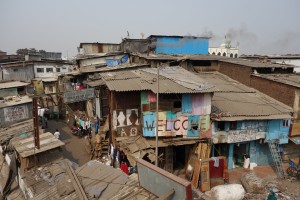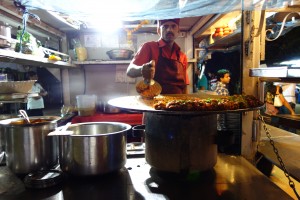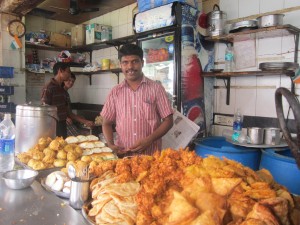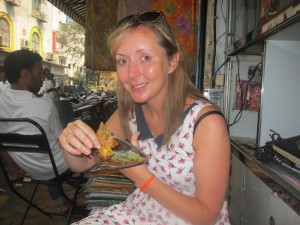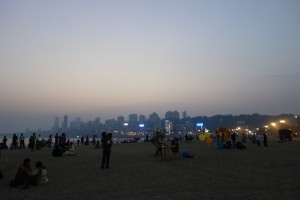We headed to Amritsar, in the Northern Punjab region, where we were to meet my parents – a.k.a. Steve and Mad – and spend a few nights in the town, home of the Golden Temple and the Vatican of the Sikh world.
We stayed in an upmarket hotel – a Christmas present from Ma and Pa – which was a welcome dose of luxury (hot showers, air-con, mini-bar, fresh linen – we couldn’t believe our luck, especially given that the night before we stayed somewhere which neglected to give us even pillows!) The first day we spent just catching up in the hotel bar, and the second we went to see the Golden Temple.
Entrance to the Golden Temple is free, free on condition that you remove your shoes and socks, and don a ridiculous orange bandana; a small price to pay, we felt, even with freezing rainwater underfoot. The whole thing is constructed out of white marble, inlaid here and there with gold inscription. You enter through a clocktower onto the focal area, a rectangular marble walkway around a still reservoir – the holy water of the Amrit Sarovar. A temple, purportedly gilded with 750 kilos of gold, floats resplendent and serene in the centre, and is reached by a bridge full of shuffling Sikhs and orange-headed tourists like us.
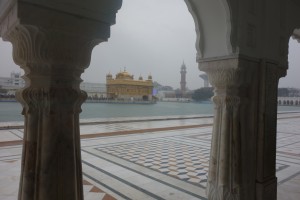
One of the most endearing aspects of the Sikh faith is a welcoming inclusiveness; everybody is welcome to visit the Golden Temple, irrespective of religion, to enjoy the place, stay the night and – I reckon the best part – eat a free lunch. You grab a stainless steel thali plate and take your place sitting on the floor of the dining hall. Vegetable curries, chapatis and dal are cooked in enormous cauldrons by volunteers (the whole place is staffed by volunteers, every Sikh should volunteer at least once in their lifetime) and a guy comes round to dish out the food to between 60 and 80 thousand people each day! Not only is it suprisingly delicious but, as an advert for Sikkhism, a masterstroke: no evangelising, no preaching, the only thing rammed down your throat is more chapatis, and yet you leave with a wonderful impression of what their religion is all about. Sikhs are now my new favourite.
We also went to see the Wagah Border Ceremony, that is the daily – daily, mind you – ceremony to mark the closing of the border between India and Pakistan. None of us knew what we were expecting, but it definitely wasn’t what we got.
On either side of the border a large brickwork gateway, one was hung with a picture of Ghandi, the other adorned with minarets and a picture of a famous Pakistani (presumably). Each led onto a large ampitheatre filled with perhaps 3000 flag-waving people. Dancing girls and an MC whipped the crowd of each nation into a patriotic fervour. Ostentatiously clothed guards enacted an elaborate fandango full of stomps, high-kicks, posturing and cross-border gesturing, whilst the two crowds exchanged football-type chants. Us foreigners were sat in our own pen and generally not encouraged to join in, rather just sit there gaping at this audacious spectacle unfolding below. It was brilliant! A bugle sounded the end of the ceremony as the flags of both countries were slowly lowered.
Amritsar itself was a bit of a disappointment. It probably didn’t help that it rained solidly for the first day and all the filth of the city coagulated into a toxic sludge, but actually there really is not much to do there, so we were happy to be leaving for Mcleod Ganj.
We could’ve taken a 6 hour bus to Mcelod Ganj, but I thought it might be a bit much for the ‘rents, so we opted for a train and taxi ride instead. Had I known what a nightmare the journey would be, I would’ve gone for the bus. Twice over.


